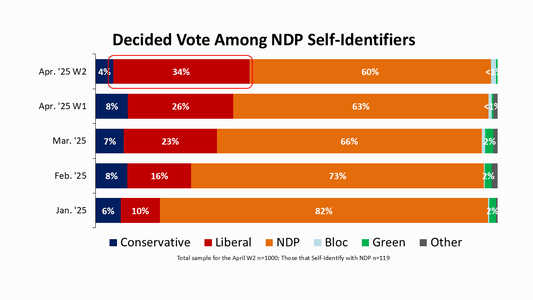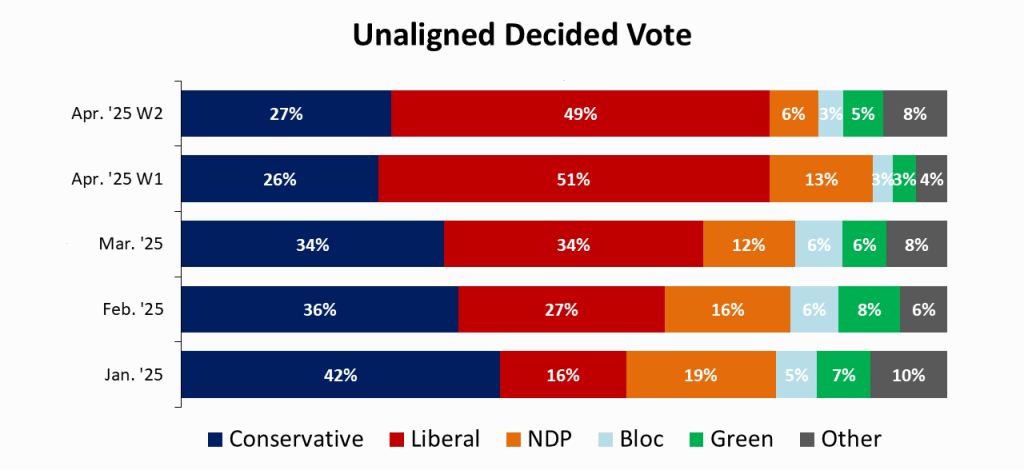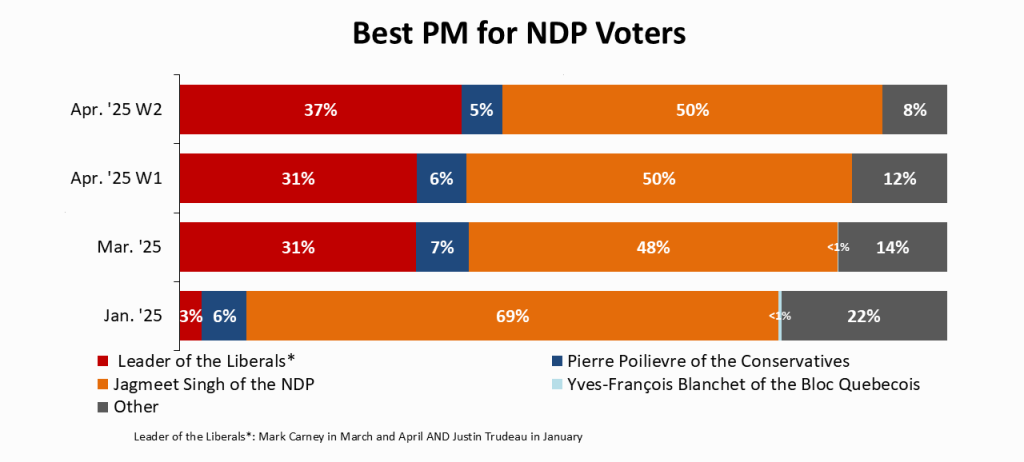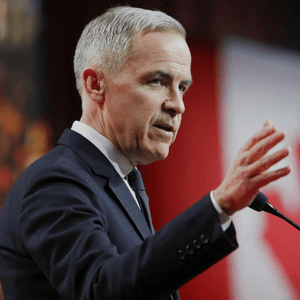
Building on Tuesday’s topline release, these are additional findings from an online survey of 1,455 Canadian citizens sponsored and conducted by Innovative Research Group Inc. (INNOVATIVE) between April 10th to April 14th, 2025. Results are weighted by age, gender, region, education, and self-reported federal past vote to ensure that the overall sample’s composition reflects that of the actual population according to Census data.
On Tuesday we discussed the topline ballot of the race, leader’s images, and hardening voter intentions here.
The dominant theme of the week is stasis. As we showed yesterday, the topline ballot and regional breaks have changed very little since last week. We have also seen little overall movement in our value clusters. The only significant movement is a small Conservative gain in Pay-As-You-Go Moderates, where the Conservatives turned a 5-point deficit last week into a 39%/39% tie with the Liberals this week. The CPC also showed progress among 18-34 voters this week, reducing their deficit to a mere 2-points against the LPC.
The Liberals, on the other hand, continued to make gains among Unaligned voters. In January the Conservatives dominated this audience, with 42% support versus 16% for the Liberals. This week we see the inverse, with the Liberals enjoying 49% support to 27% for the Conservatives.

Voters who choose the Liberal Party as their 1st choice continue to cite good leadership (20%), think they will win (19%), and shared values (18%) as their top reasons for choosing Liberals. Examining a Word Cloud continues to point to Carney’s central importance as well.
Conservative responses also remain unchanged week on week, with alignment with their core values (25%) and desire for a new party to lead (13%) remaining at the top. For both major parties the top identified barrier for 2nd-choice voters is distrust or distrust of the party/leader – 17% for the LPC and 24% for the CPC.
Finally, we have to spend some time on the ongoing movement of NDP voters to the Liberals has shaped this election. This week, voters listing the NDP as their second choice, who are mostly Liberal as their first choice now, identify “don’t think they would win” (29%) and “distrust the party/leader” (10%) as their top barriers to casting a ballot for the NDP.
Worse for the NDP, when asked which party leader would make the best Prime Minister of Canada, the movement among even the remaining NDP voters is stark:

This has been covered before, but NDP weakness on this scale is a disaster for the Conservative campaign. The NDP took 20% of the vote in 2015 and 2019, and even a relatively weak 2021 result saw them take 16%. They currently stand at 11% in this week’s tracking.
If the NDP cannot reverse this trend, the Conservative challenge becomes even more difficult. It comes back to Liberal vote efficiency. In the last elections, the CPC was 1 point ahead of the Liberals in total vote. But the Liberals won 40 more seats. If you add these new NDP switchers to the Liberal base, the Conservative could end up with more votes than 2021 but even more than 40 seats behind the Liberals.
Put another way, unless the NDP or Bloc can recover some of their loses, the Conservatives probably need a 10-point swing in the final two weeks of the campaign to emerge victorious. We saw a swing like that in Alberta in 2012, but it is a steep requirement in a short time.
Click here to read the full report!
































